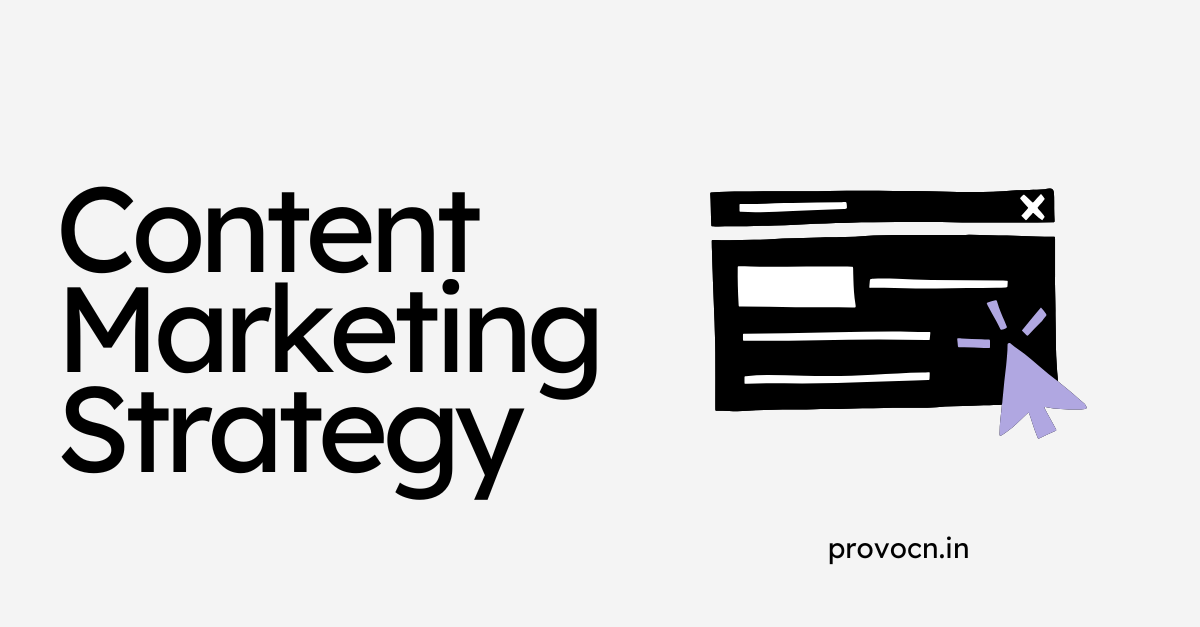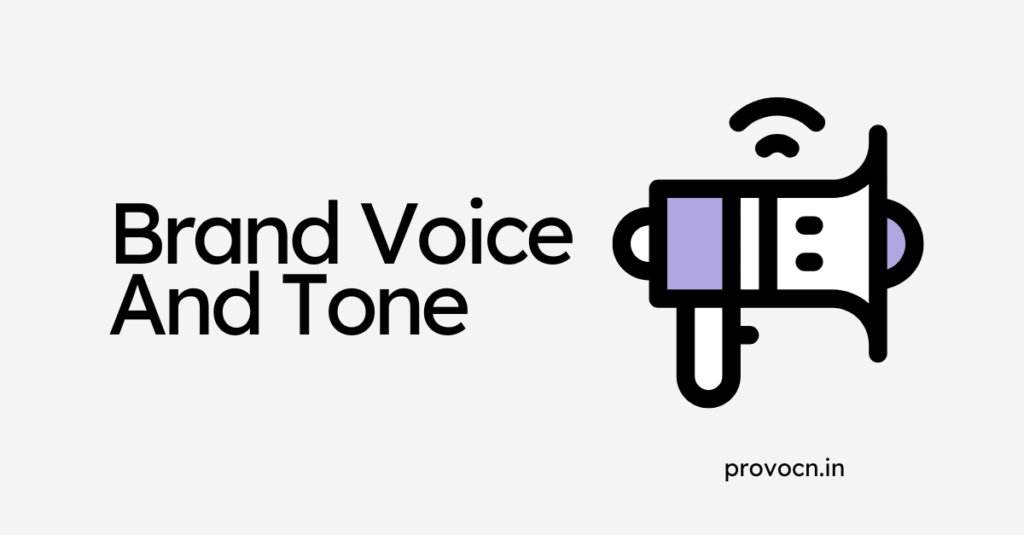Content Marketing Strategy: The Complete Guide
Published on January 9, 2025 by Anisha Patel

Creating a content marketing strategy can feel overwhelming at start. But if you do it well, it can effectively grow your business. A good content marketing strategy that is well aligned with your business goals will give you results for a long time.
In this blog, I will help you build a clear actionable strategy that will delivers results you want. You can use these links to navigate through this blog.
What is Content Marketing?
Content marketing is the process of creating, distributing, and promoting valuable, relevant and consistent content to attract and engage a clearly defined audience.
It is different from traditional marketing which interrupts people with promotional messages which is mostly disliked by the people.
Content marketing on the other hand is liked by the audience as it provides information or entertainment which is searched by them without interrupting them.
It helps you build a long-term genuine connection with your customers and establish yourself as a thought leader in your industry.
This is a list of few of most widely use content formats:
- Blogs
- Videos
- Social media posts
- E-book
- Infographics
- Email newsletters
- Online courses
- Interactive content
- Webinars
Benefits of Content Marketing
Content marketing helps businesses:
- Builds Brand Awareness: By regularly publishing high-quality, informative and valuable content you increase your brand’s visibility which builds trust and recognition over time.
- Drives Organic Traffic: Optimised content improves your website’s search engine rankings, making it easier for potential customers to find you and driving consistent organic traffic
- Enhances Customer Relationships: By sharing helpful tips, insights, or success stories, you strengthen the bond between your brand and its audience, fostering trust and long-term loyalty.
- Positions you as an Industry Leader: Consistently publishing insightful, thought-leadership content helps establish your credibility and authority within your niche.
- Provides Cost-Effective Marketing: Content marketing is a cost-effective strategy that often delivers a higher ROI compared to traditional advertising over time.
How to Create Content Marketing Strategy?
- Step 1: Define Your Goals
- Step 2: Understand Your Audience
- Step 3: Audit Existing Content
- Step 4: Conduct Keyword And Topic Research
- Step 5: Choose Content Type And Channels
- Step 6: Develop A Content Calendar
- Step 7: Create And Optimise Content
- Step 8: Monitor, Measure And Refine
In this section I take you through a 8-steps process to develop and execute content marketing strategy which will help you grow your business.
Step 1: Define Your Goals
In a recent study conduced by Content Marketing Institute, 39% B2B marketers said they lack clear marketing goals which is a big problem. If you don’t clearly know what your goal is then your effort can get wasted.
We won’t do that mistake. We will start building our content marketing strategy with clearly defining our clear goals. Content marketing goals could be
- Increase brand awareness
- Drive website traffic
- Generate leads
- Boost customer engagement
- Improve conversion rates
- Enhance customer loyalty
- Supports sales funnel
After defining your goals, the next step is to understand your audience.
Step 2: Understand Your Audience
In order to create content that your audience loves you must know them. The best way to know your audience is through a buyer persona. But what is a buyer persona?
A buyer persona is a detailed representation of your ideal customer which is created by using market research, real customer data, and insights. Having a good buyer persona will help you tailor your content, messaging and overall marketing strategies to meet their needs, preferences and challenges.
A buyer persona consists of these 7 elements:
- Demographics
- Psychographics
- Professional details
- Behavioural insights
- Pain points
- Motivations
- Objections
By fully understanding your audience, you’ll be able to create content that speaks directly to them, addresses their needs, and builds meaningful connections.
Step 3: Audit Existing Content
Now you need to a content audit. It will help you evaluate all the content on your website and get information about its relevance, performance and quality. The goal of this audit is to identify strengths, weaknesses and opportunities.
By auditing your content, you’ll maximise the value of your existing assets and uncover opportunities to strengthen your content marketing strategy.
To audit existing content, follow these steps:
- Compile a list of relevant content pages.
- Measure the current performance.
- Implement an action plan.
You can measure the current performance on these metrics:
- Organic traffic
- Keyword rankings
- Backlinks
- On-page SEO
- Technical SEO
And after compiling the list and measuring the current performance, categorise them into
- Keep it as it is
- Update
- Consolidate and redirect
- Delete
It will give you a clear picture of what is working and what is not. You can eliminate what does not work and focus on what works. This template will help you do your content audit effectively.
Step 4: Conduct Keyword And Topic Research
Now, you have clearly defined goals, you know who to target and you also know what works in your industry and for your business. Next you need to do keyword and topic research.
Having the right keyword and topics will ensure that your content resonates with your audience and ranks well in the search engine.
1. Identify Relevant Keywords
You can use tools like Google Keyword Planner, SEMrush, or Ahrefs to identify high-volume, low-competition keywords that align with your audience’s search intent.
Focus on three main types of intent:
- Informational keywords to educate your audience.
- Transactional keywords to attract potential buyers.
- Navigational keywords to guide users searching for specific services or businesses.
2. Explore Trending Topics
Create content on trending topics. It will help you stay relevant in your industry. You can use tools like Google Trends, monitor popular social media hashtags, and review competitor blogs to identify trending topics.
3. Align Topics with Business Goals
Align content with your business goals. If your goal is lead generation then create content that allows you to capture audience information while delivering value, like eBooks or webinars.
4. Group Keywords into Clusters
Create content clusters by organising related keywords. It will improve structure and relevance. Content clusters serve as the foundation for developing pillar pages supported by related blog posts, enhancing your website’s SEO and user experience.
Content cluster looks like this:
Step 5: Choose Content Type And Channels
Different people consume content in different ways on different channels. Selecting the right content formats and distribution channels is important to reach the right audience. Choose formats that align with your goals and engage your audience.
Some popular content formats are:
- Blog Posts
- Videos
- Infographics
- Case Studies
- Podcasts
- eBooks/Whitepaper
Some popular distribution channels are:
- Websites
- Email newsletters
- Social shares
- Guest posts
- Media mentions
- Ads
- Sponsored content
With the right content types and channels, you can effectively engage your audience while maximising your content’s impact and ROI.
Step 6: Develop A Content Calendar
Now we have everything. Goal, audience, list of things that works, keywords, content formats and channels. This is the time to create a content calendar to ensure everything stays in place.
Content calendar will help you stay consistent and deliver content that is aligned with your business.
Here are some tips to create a content calendar:
1. Plan content frequency and types
Create a consistent publishing schedule by deciding how often you’ll release content, whether daily, weekly, or monthly. Diversify your content types to engage different audience segments by adding formats like blog posts, videos, infographics, and social media updates to maintain variety and maximise reach.
2. Include key details
Add key details such as clearly defined topics for each piece, specifying what it will cover to maintain focus and relevance. Schedule exact publishing dates to keep your content calendar organised and timely.
Assign responsibilities to team members or departments, ensuring accountability and smooth execution throughout the content creation process.
3. Choose a tracking tool
Having a tracking tool will streamline scheduling and collaboration in your content planning process. Tools like Trello allow you to organise content as cards in a visually intuitive, board-based format, while Asana helps you track deadlines, assign team responsibilities, and monitor project progress.
For a simpler approach you can also use Google Calendar. It can effectively schedules dates and keep your content workflow on track.
4. Ensure flexibility
Maintain flexibility in your content plan to adapt to new trends, audience feedback, or breaking news. Building in room for adjustments ensures your strategy remains relevant, responsive, and aligned with changing industry dynamics or audience needs.
This detailed content calendar will help you stay consistent with your publishing schedule and ensure your content aligns with your strategy
Step 7: Create And Optimise Content
With everything ready, its time to create content. Creating and optimising content is the heart of a successful content marketing strategy. Your content should engage your audience, deliver value, and follow to SEO best practices to maximise its impact.
Following these tips while creating content:
1. Craft value-driven content
Create value-driven content by addressing your audience’s pain points. Use storytelling, data, real-world examples, and compelling visuals.
2. Maintain consistency
Maintain consistency in your content by using the same tone and voice that aligns with your brand. Whether it’s professional, conversational or playful ensure your style resonates with your target audience which will build familiarity and trust.
3. Follow SEO best practices
SEO is one of the most important thing in content marketing. So, don’t forget to follow SEO best practices to enhance your content’s visibility and performance.
- Naturally add primary and secondary keywords in titles, subheadings, and throughout the content to optimise keyword placement.
- Creat compelling meta titles and descriptions to boost click-through rates.
- Include descriptive alt text for images to improve accessibility and SEO.
- Use internal links to connect related content on your site .
- Include credible external links to support your claims.
4. Optimise for Readability
At last, optimise your content for readability. Use short paragraphs, bullet points, and subheadings to make it easy to scan. Add visuals like images, videos, and infographics to break up text and illustrate key points.
Also ensure your content is optimised to be mobile-friendly as majority searches happen on mobile.
By creating content that is both engaging and optimised, you can attract and retain your audience while improving your visibility in search engines.
Step 8: Monitor, Measure And Refine
Finally at the last step, you need to monitor and measure the content you created and keep refining it time to time. Monitoring performance ensures that your efforts align with your goals and deliver maximum ROI.
1. Track Key Performance Indicators (KPIs)
Track key performance indicators (KPIs) that align with your objectives to measure how effective your content is.
- Website traffic: Page views, unique visitors, traffic sources to assess your content’s reach.
- Audience engagement: Likes, shares, comments and time spent on content.
- Conversion rates: Form submissions, downloads, or purchases.
2. Use Analytical Tools
Analytics tools will help you measure your content’s performance and gain actionable insights.
- Google Analytics helps you analyse traffic, user behaviour, and conversion rates.
- HubSpot allows you to monitor the effectiveness of email campaigns, landing pages, and blog posts.
- Sprout Social enable you to track interactions and identify top-performing posts, ensuring your strategy is informed by data.
3. Refine Your Strategy
Conduct regular performance reviews to analyze what’s working and identify underperforming content. For example, if blog traffic is high but conversions are low, consider improving your calls-to-action (CTAs).
Stay updated on industry trends, audience preferences, and algorithm changes to keep your content relevant and competitive. Experiment continuously with new formats, posting times, and content types to discover what resonates best with your audience and optimize accordingly.
By consistently monitoring, measuring, and refining your content marketing efforts, you can make sure that your strategy remains effective and aligned with both your business goals and audience needs.
Final words
Creating a content marketing strategy is an ongoing process. Learn, adapt and refine. By following these 8-steps I am sure you’ll set a strong foundation for success and deliver meaningful results.
Consistency and alignment with your business goals are the key to make your strategy effective.
Need help with content marketing? Let’s take your strategy to the next level together. Explore our services and let’s create something extraordinary.








